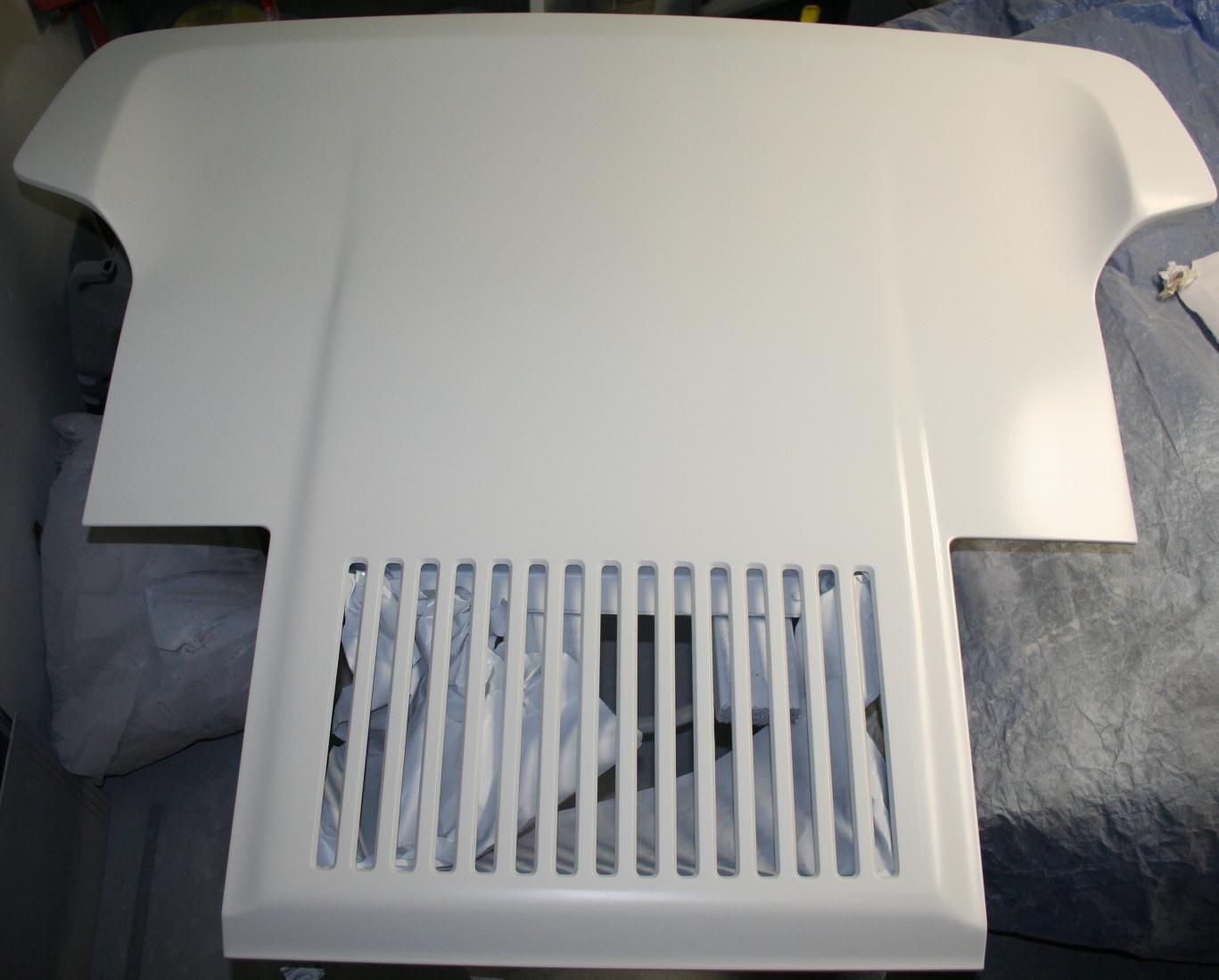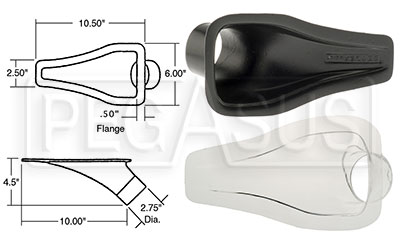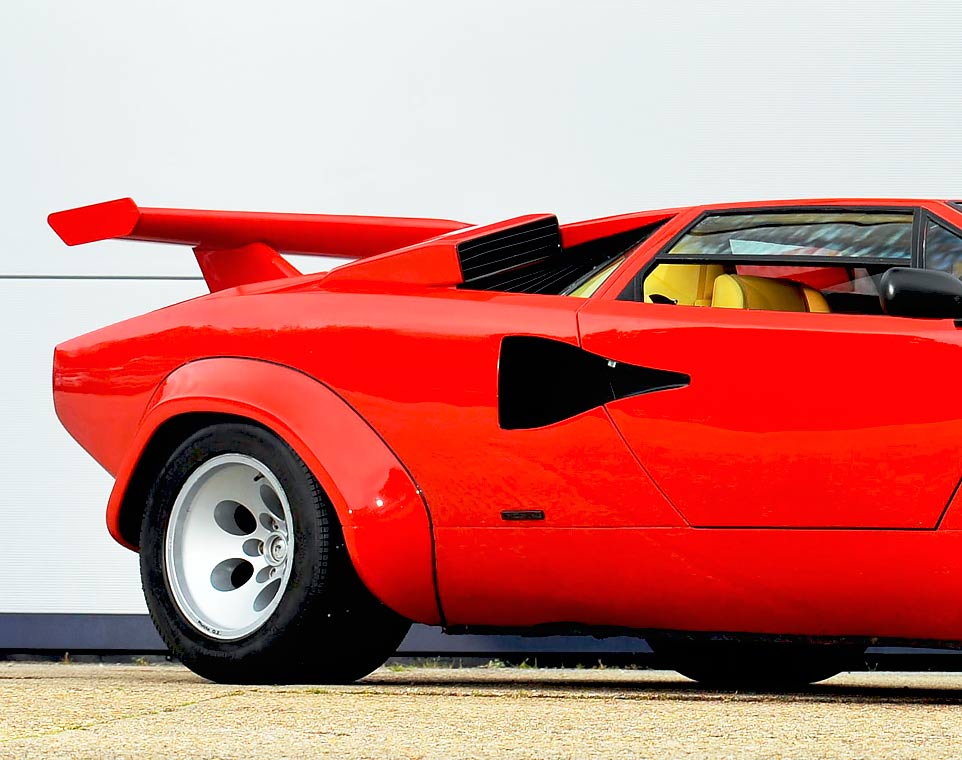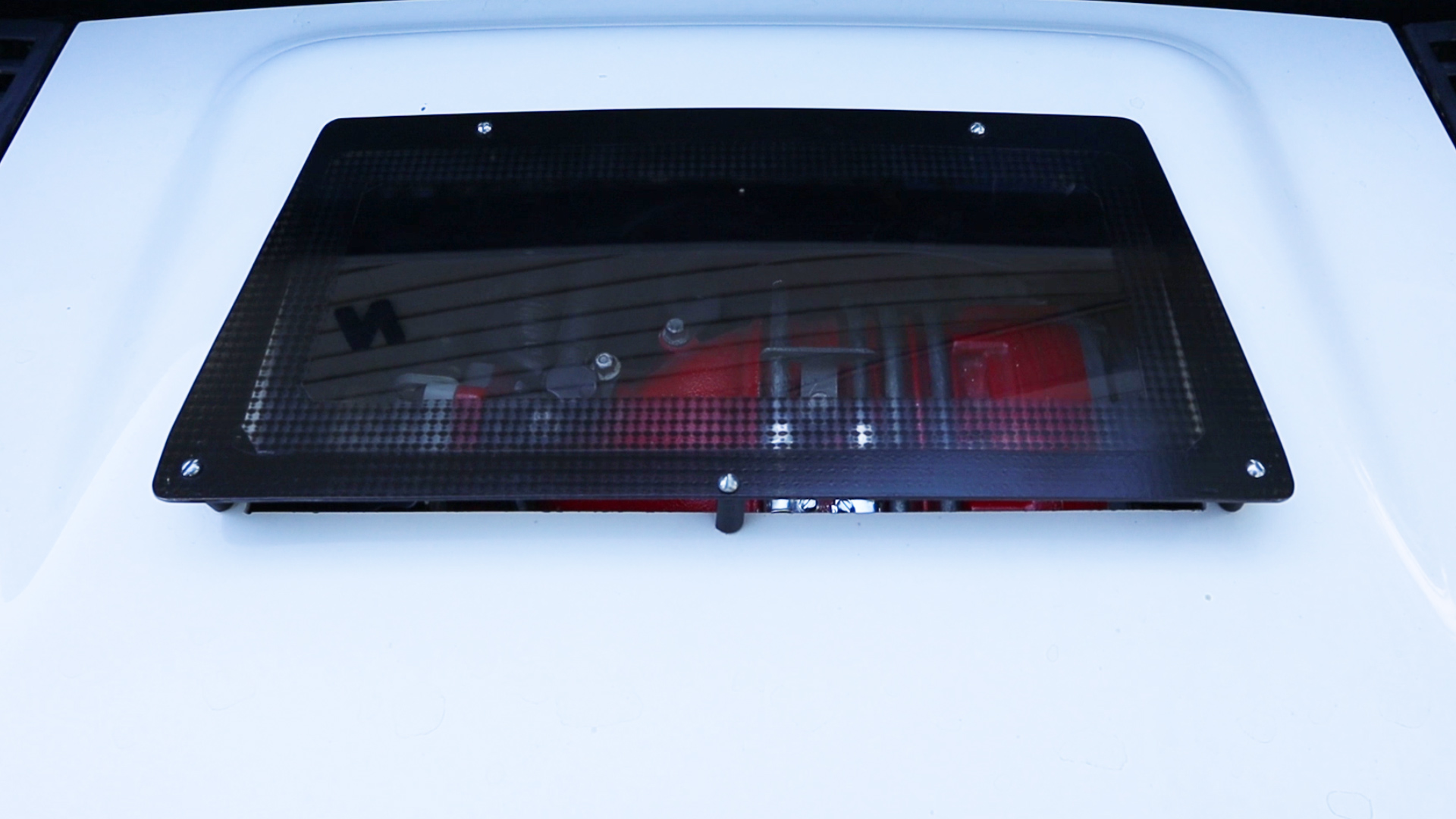
 
     |
| Side air intalke scoop (currently available) anyone know of any good ones? (Page 2/4) |

|
La fiera
|
DEC 25, 08:34 PM
|
|
| quote | Originally posted by IMSA GT:
I actually did that and incorporated an engine vent from an 84 into the decklid.

|
|
smart move!!!!
|
|

|
pmbrunelle
|
DEC 25, 09:14 PM
|
|
I'm confused... is the engine air filter breathing from the wheelwell area, and not from outside the car?
It seems obvious to me, but the best solution for cold air will be to suck air from outside the car, as in a stock Fiero.
Outside the car, the incoming wind can have a ram effect, however, near the skin the air is slowed down by the drag with the skin. This slow-moving air near the skin is called the boundary layer. So in general a scoop is placed away from the car body.
Williams FW11

Scoops visible on top of the sidepods.
McLaren MP4/4

Similar to FW11.
The scoops didn't appear at all races, so maybe they were good for some tracks, and detrimental for others?
MD F-4 Phantom II

This plane has a splitter to help keep the boundary layer separate.
If you don't want to have a conspicuous scoop, you can try a NACA duct.
They can be bought as pre-made items that you bolt on, and could be glassed in I suppose:

https://www.pegasusautoraci...ion.asp?Product=3628
The main challenge here might be with finding a NACA duct short enough to fit lengthwise in the quarter panel.
If you're willing to do more extensive bodywork, the duct can be continued into the door.
Lamborghini Countach:

|
|

|
La fiera
|
DEC 25, 09:43 PM
|
|
The FW11 and the McLaren MP4/4 were turbo engines. The main cooling was to the intercoolers. In the big openings on the sides of the car are made to increase cooling on the intercoolers and radiators. If it was NA It would have a scoop on top and the side big openings would have venturis to extract air out of the engine bay.
To use the same principle in the Fiero, side and under scoops will keep air flowing through the engine bay removing all that heat.
In another note, that's why I made my exhaust the way I did it; reduce exhaust piping equals reduced engine compartment heat.
|
|

|
DimeMachine
|
DEC 26, 08:56 AM
|
|
| quote | Originally posted by olejoedad:
Where is your air filter now located? |
|
in front of the drivers side wheel well liner in the area that is directly behind the stock inlet vent.
|
|

|
DimeMachine
|
DEC 26, 08:58 AM
|
|
| quote | Originally posted by IMSA GT:
I actually did that and incorporated an engine vent from an 84 into the decklid.

|
|
Very nice and effective.
I have a window/vent there now but I am thinking of making it breath better.

|
|

|
theogre
|
DEC 26, 11:52 PM
|
|
Oh. Someone thinks Engine gets too hot... again...
Fiero has more engine air cooling park and moving vs a F'ing lot of front engine cars.
"Adding" Air flow to Fiero Engine bay is not needed by nearly all Fiero including engine swap cars and cause problems depending just what is done.
OE Vents let heat out fast even parked.
The vents work w/ air flowing over and under the car when moving.
Many front engines are very close space back then and worse now and hold heat for longer time when parked. Most now block the "grill" to "help" tiny bit of MPG to get EPA CAFE points to car makers. Many even have plastic panels on bottom of engine bay too.
See Fiero Engine bay vs Heat. http://www.fiero.nl/forum/Forum2/HTML/141784.html (Also covers cabin temps park in summer.)
You can buy cheap "thermometer" to read any K-type Thermocouples to see if you really need to add more vents or whatever and check if you mods do anything.
Many Multi-meters have temp function but most cheap are not made to use standard thermocouples plugs. Some came w/ an adapter for this but don't and find one or mod the "wire" to have probe plugs.
search K Thermocouple meter and K Thermocouple Sensors at amazon etc.
quick example for $23 https://www.amazon.com/Kamt...couple/dp/B07DLW3MNV
Meter often only have short sensors but can find all lengths and formats like https://www.amazon.com/Twid...rature/dp/B07S6S3JXT
Now If the engine "runs hot" as measured by ECT sensor via ECM/PCM scan tools... Adding air cooling to the engine bay won't help.
(Engine is "hot" using a dash meter including many aftermarket units often mean little or nothing.)
Engine running at 200 to 230°F Is Normal.
If running over 230-235°F then you have bigger problems to fix w/ the coolant system.
Examples:
Many are missing body panels in front to direct air to radiator. Even w/ Rad Fan force on this may not force enough air to cool right.
Many Engine swaps have F'd up plumbing and can/will run hot because of that.
That assuming you don't have crap in or damage the pipes, the rad, heater core, etc. See cave...
If something like electrical is cooking then adding more bay air likely won't help.
Very likely need heat shields to block IR from exhaust heating them and other fixes like that.
Big example: Many make or buy a Heat Shield for the Starter for this reason even tho starter gets a lot of air flow. Because IR from pipe and Cat can still heat the starter even w/ air flow.
Or ICM Alt and others generate heat and have problem making them even hotter.
ICM w/ iffy coil(s) or anything wrong w/ low or high volts can have a short life.
Alt may need a heat shield but a shield can't block air to it or pointless to have fan(s) on/in them.
Thermocouples can help if a E-part is getting hot. Engine E-parts are made to be hotter then most things but pushing past 200°F is often soon dead part. Say you measure 200°F on Alt case when car is moving then regulator etc are often much hotter then that. Same for many other E-parts.
|
|

|
skywurz
|
DEC 27, 01:43 AM
|
|
As someone who's cooling fan never kicks on during normal driving during normal temps. Reading these temp concerns makes me think i should develop a LN2 kit.
You've heard of N2O and its amazing bolt on no mods needed press button go performance modifications. Now here for the first time we bring you LN2! What can LN2 do for you!
|
|

|
DimeMachine
|
DEC 27, 01:13 PM
|
|
| quote | Originally posted by theogre:
Oh. Someone thinks Engine gets too hot... again...
Fiero has more engine air cooling park and moving vs a F'ing lot of front engine cars.
"Adding" Air flow to Fiero Engine bay is not needed by nearly all Fiero including engine swap cars and cause problems depending just what is done.
OE Vents let heat out fast even parked.
The vents work w/ air flowing over and under the car when moving.
Many front engines are very close space back then and worse now and hold heat for longer time when parked. Most now block the "grill" to "help" tiny bit of MPG to get EPA CAFE points to car makers. Many even have plastic panels on bottom of engine bay too.
See Fiero Engine bay vs Heat. http://www.fiero.nl/forum/Forum2/HTML/141784.html (Also covers cabin temps park in summer.)
You can buy cheap "thermometer" to read any K-type Thermocouples to see if you really need to add more vents or whatever and check if you mods do anything.
Many Multi-meters have temp function but most cheap are not made to use standard thermocouples plugs. Some came w/ an adapter for this but don't and find one or mod the "wire" to have probe plugs.
search K Thermocouple meter and K Thermocouple Sensors at amazon etc.
quick example for $23 https://www.amazon.com/Kamt...couple/dp/B07DLW3MNV
Meter often only have short sensors but can find all lengths and formats like https://www.amazon.com/Twid...rature/dp/B07S6S3JXT
Now If the engine "runs hot" as measured by ECT sensor via ECM/PCM scan tools... Adding air cooling to the engine bay won't help.
(Engine is "hot" using a dash meter including many aftermarket units often mean little or nothing.)
Engine running at 200 to 230°F Is Normal.
If running over 230-235°F then you have bigger problems to fix w/ the coolant system.
Examples:
Many are missing body panels in front to direct air to radiator. Even w/ Rad Fan force on this may not force enough air to cool right.
Many Engine swaps have F'd up plumbing and can/will run hot because of that.
That assuming you don't have crap in or damage the pipes, the rad, heater core, etc. See cave...
If something like electrical is cooking then adding more bay air likely won't help.
Very likely need heat shields to block IR from exhaust heating them and other fixes like that.
Big example: Many make or buy a Heat Shield for the Starter for this reason even tho starter gets a lot of air flow. Because IR from pipe and Cat can still heat the starter even w/ air flow.
Or ICM Alt and others generate heat and have problem making them even hotter.
ICM w/ iffy coil(s) or anything wrong w/ low or high volts can have a short life.
Alt may need a heat shield but a shield can't block air to it or pointless to have fan(s) on/in them.
Thermocouples can help if a E-part is getting hot. Engine E-parts are made to be hotter then most things but pushing past 200°F is often soon dead part. Say you measure 200°F on Alt case when car is moving then regulator etc are often much hotter then that. Same for many other E-parts. |
|
My engine runs cool - no problem there what-so-ever. It is right at 180 where I have it set for normal weekend driving.
Just trying to lower underhood temps to get less heat into the intake tract. I have tested every possible inlet air temp and coolant temp I an think of over the past 7 years with this setup and she likes cooler IAT temps (the cooler the better) to make horsepower. Also likes cool coolant temps for best 1/4 mile performance. 155 coolant temp has shown the best in my car based upon extensive testing. Would not run that on the street though...that would be bad for a number of reasons. Back to air temp. Cold air holds more oxygen which means more fuel can be used which means more power. That is the goal I am after here.------------------
84/87 NB, 3800SC, E-85, VS Cam, 2.8 Pulley, 4T65E-HD, HP Tuners, AEM Wideband, Regal GS Gauges, S-10 Brake Booster. 1/4 mile -11.85 at 114mph
|
|

|
DimeMachine
|
DEC 27, 01:15 PM
|
|
| quote | Originally posted by skywurz:
As someone who's cooling fan never kicks on during normal driving during normal temps. Reading these temp concerns makes me think i should develop a LN2 kit.
You've heard of N2O and its amazing bolt on no mods needed press button go performance modifications. Now here for the first time we bring you LN2! What can LN2 do for you! |
|
Sold. I will take one. Liquid nitrogen air intake cooling - what do you have?
|
|

|
pmbrunelle
|
DEC 27, 01:56 PM
|
|
I think that there is a distinction to be made between air inlet temperature and coolant temperature.
Hotter coolant temperature is good because:
Thinner oil
Less heat loss during the power stroke from the hot pressurized gas to the head and cylinder walls
Lower air inlet temperature is good because:
Air is denser, so more mass in the cylinder
********************************************************************************
There is an apparent contradiction in that you report that 155 °F coolant temp gives the most power.
I suspect that with hotter coolant, the head/intake is heating the inlet air, reducing its density.
Conclusion:
Do not take air inlet temperature sensor readings at face value. True air inlet temp is equal to the incoming air, plus some temperature rise due to the hot engine.
********************************************************************************
If you want to use such low coolant temperatures, perhaps you should review your choice of oil viscosity.
If reducing coolant temp increases air density, then perhaps by using a thinner oil, you can further reduce coolant temp before the oil becomes too thick and reduces power.
|
|
    
  |
|















